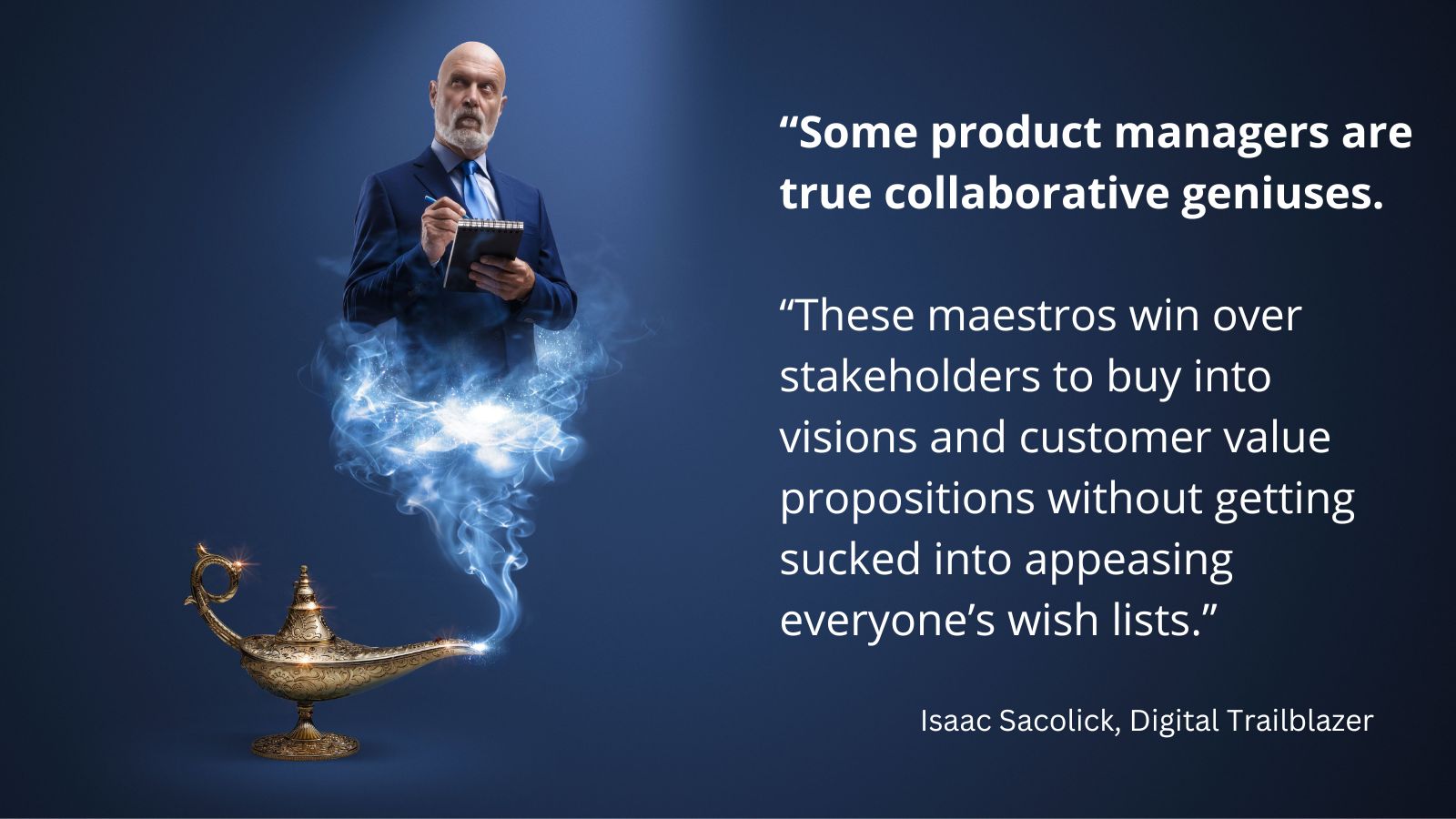“Some are true collaborative geniuses. These maestros win over stakeholders to buy into visions and customer value propositions without getting sucked into appeasing everyone’s wish lists.”
I tell this story at the beginning of Chapter 4 of Digital Trailblazer, a chapter I titled “Product Management and Architecture: Trials and Triumphs.”
Several years ago, I introduced my vision statement template in a post,
five ways vision statements drive achievable digital transformations. I released an improved version 2 of the vision statement template last
year, and you can
download it here.
To help you apply the vision statement, I just released a Driving Digital
Standup video,
How to Partner with Digital Transformation Stakeholders by Defining Your
Product Vision Statements. You can also find it at the end of this post.
Collaborate on vision statements
As you’ll hear in the video, the key to winning over stakeholders is
brainstorming the vision statement together with the team planning and
implementing a transformation initiative.
Why? Because vision statements help align around who the customer is, what
are their value propositions, which constraints the team must consider in
implementations, and why the initiative has strategic importance.
Most importantly, you’re redefining the stakeholder role – something
executives and business leaders must understand, especially when running
transformation initiatives as agile products. Stakeholders don’t dictate
requirements and priorities. They recommend these to product managers, who
must validate them with customers, formulate a strategy, and collaborate on
an agile roadmap.
Vision statements are just the start, and I share some of the next steps in
the documentation accompanying
my vision statement template.
Other changes include shifting to
agile continuous planning
and
redefining change management to transformation management. I hope you read these posts and
reach out to me with your questions.

No comments:
Post a Comment
Comments on this blog are moderated and we do not accept comments that have links to other websites.